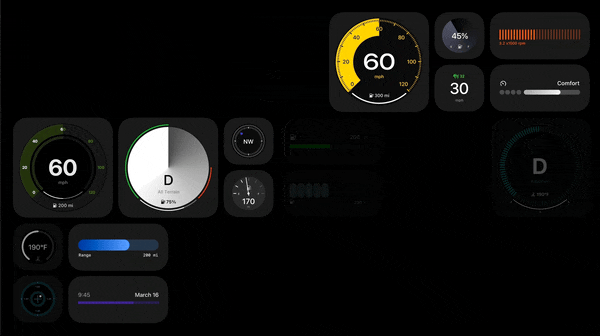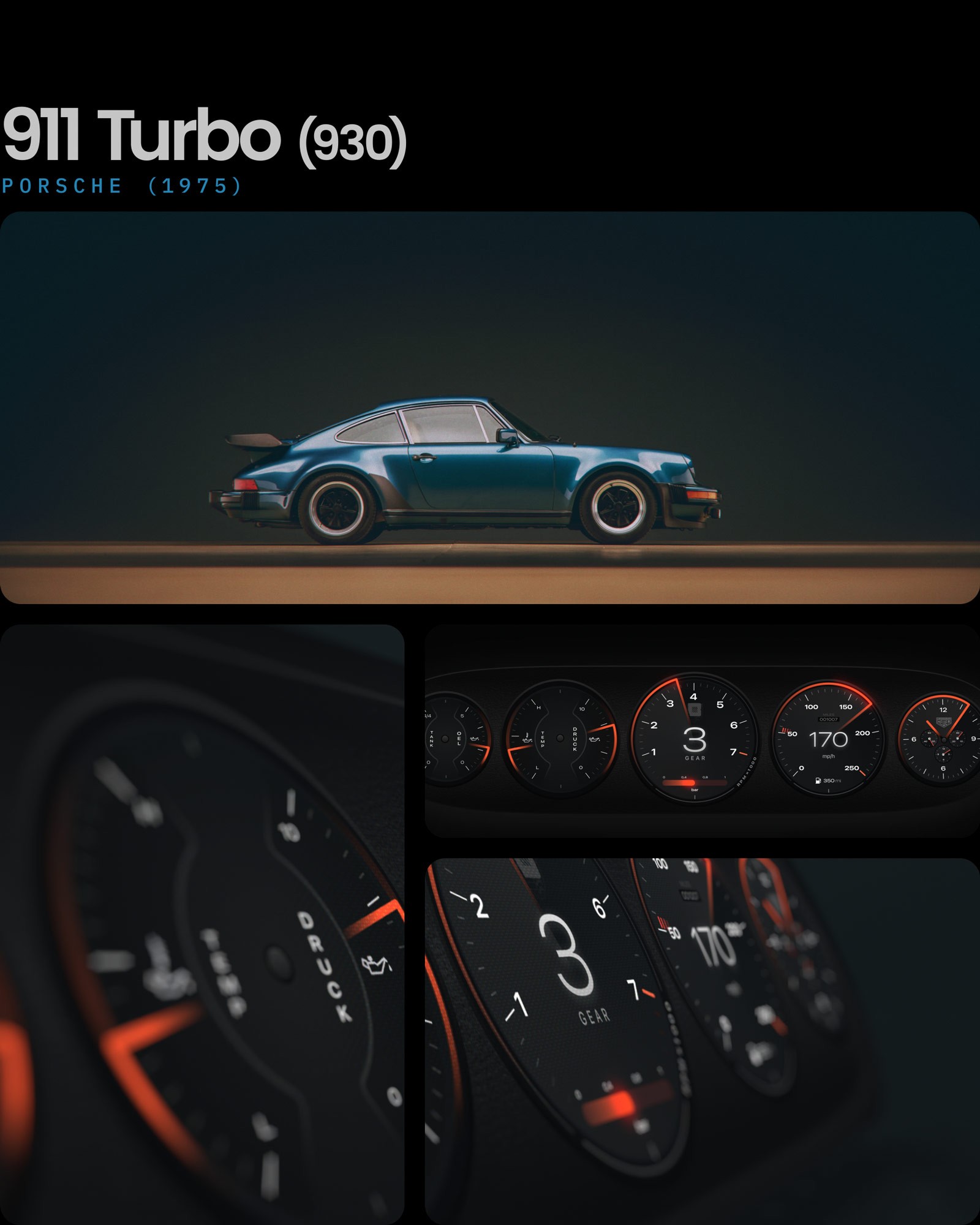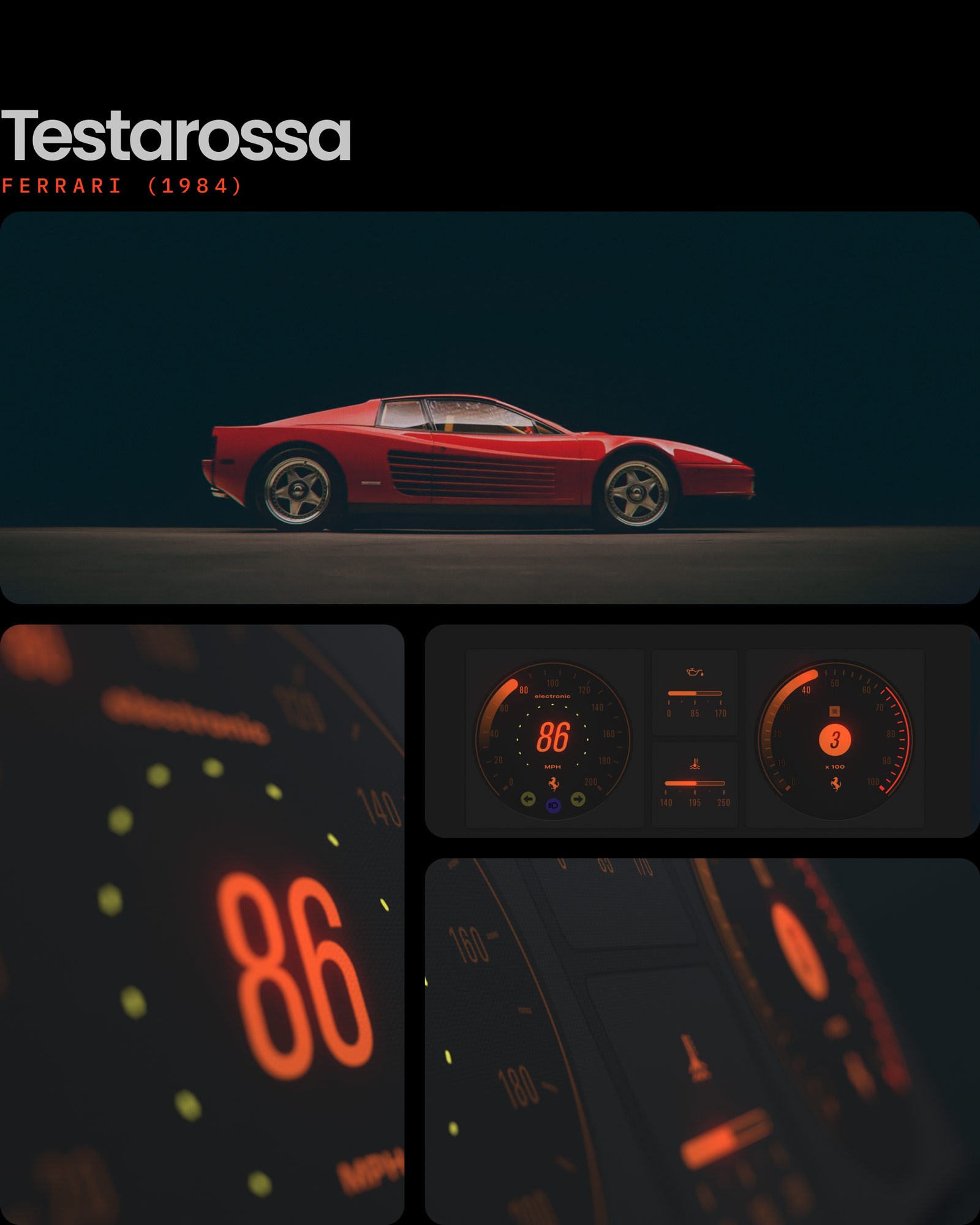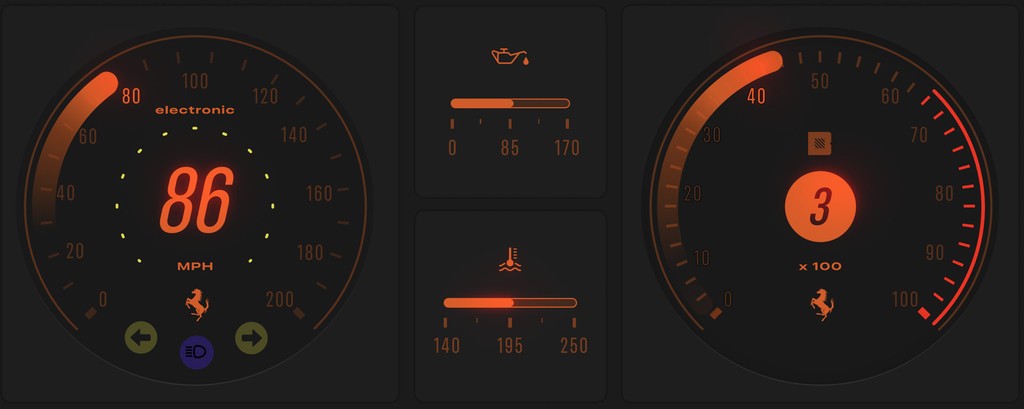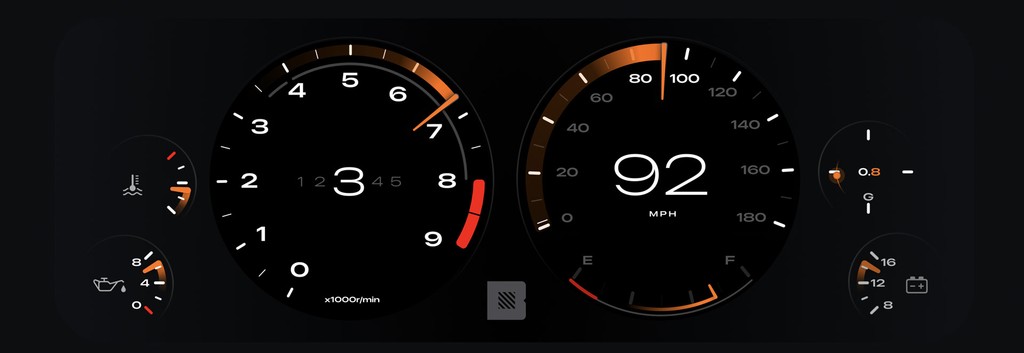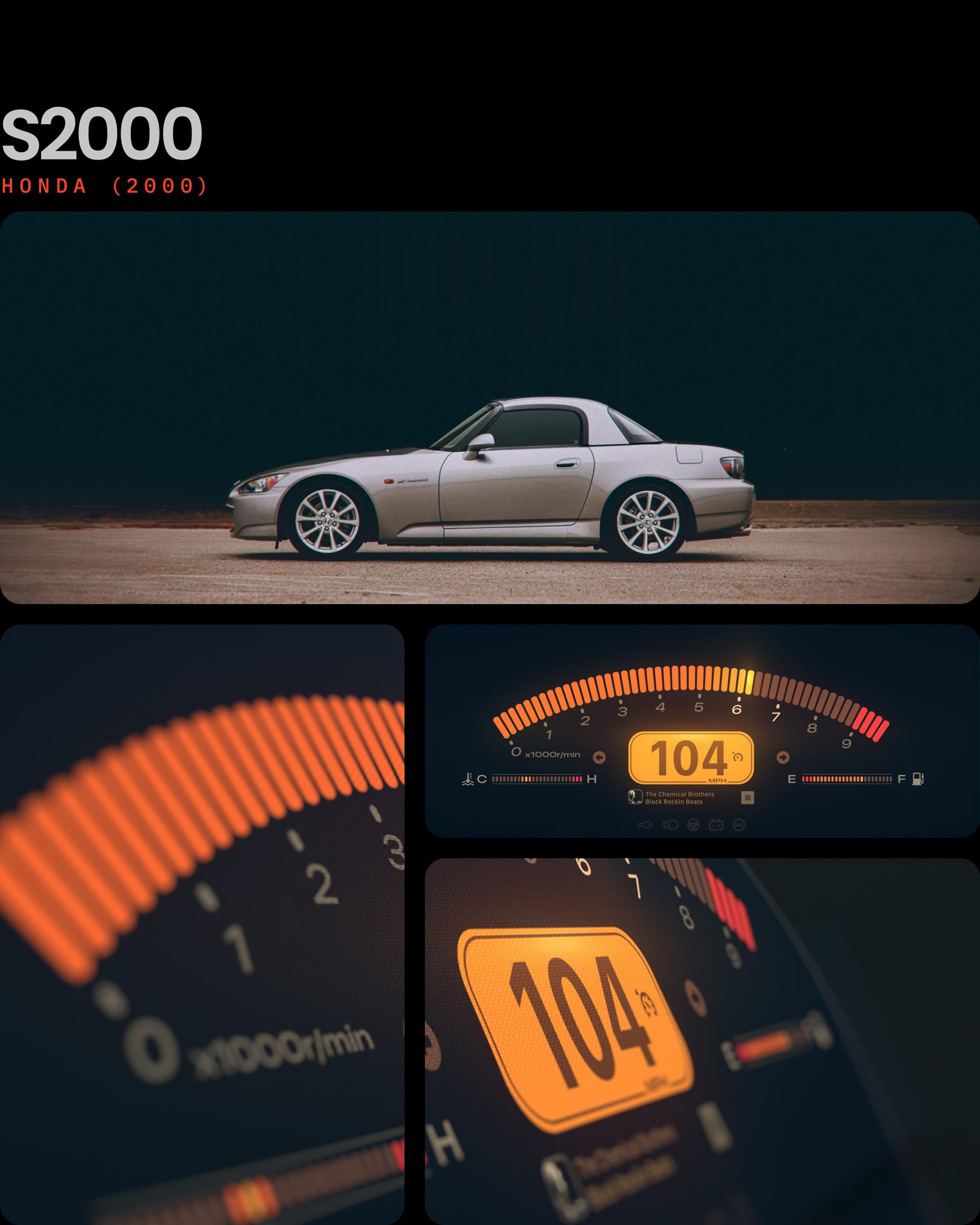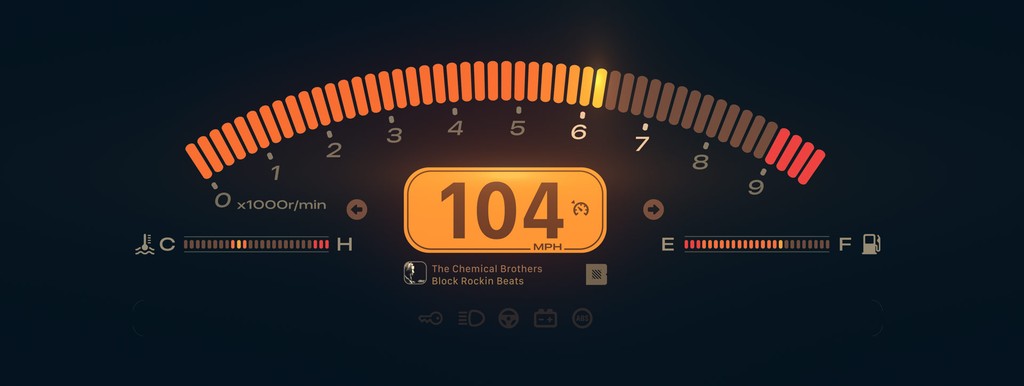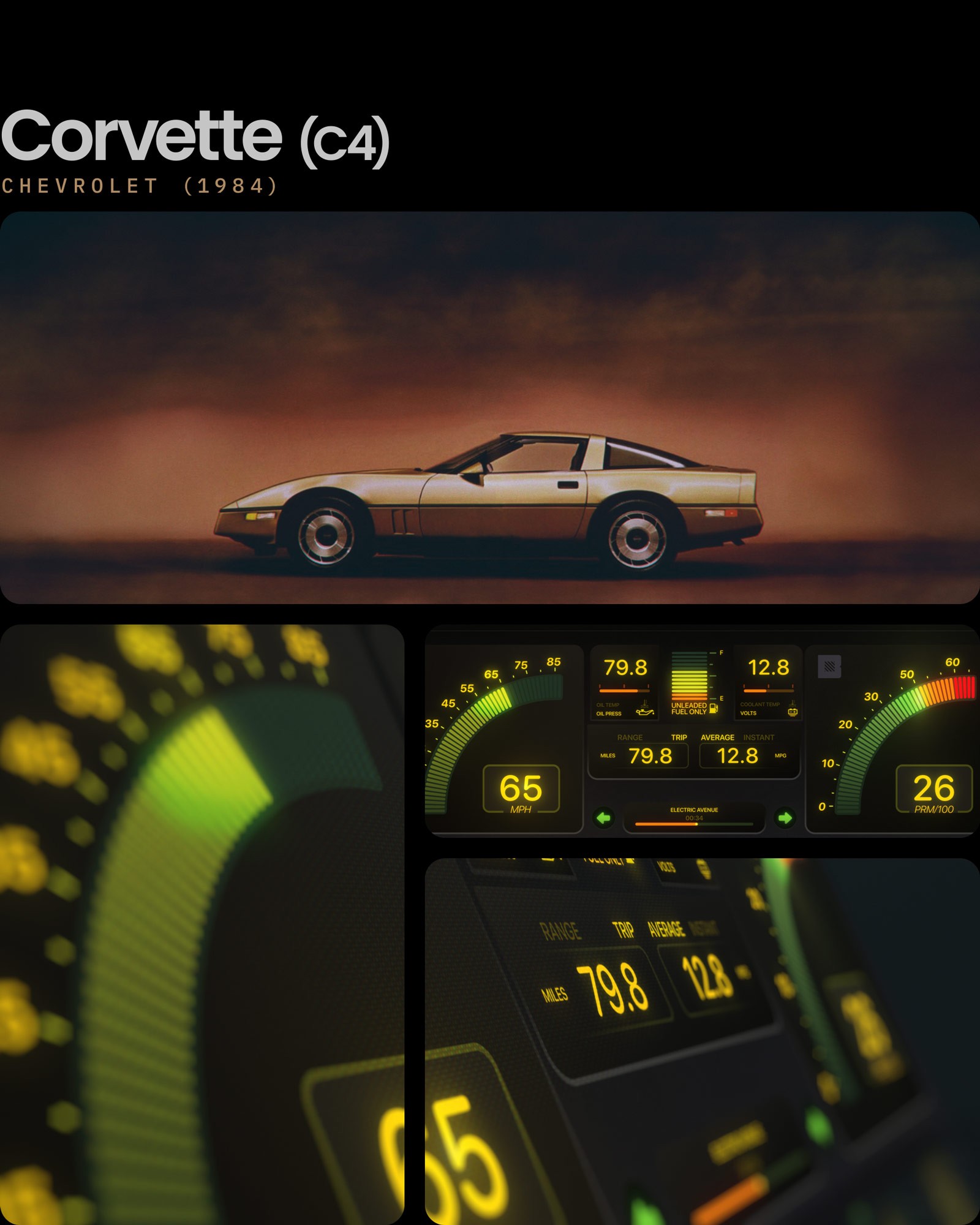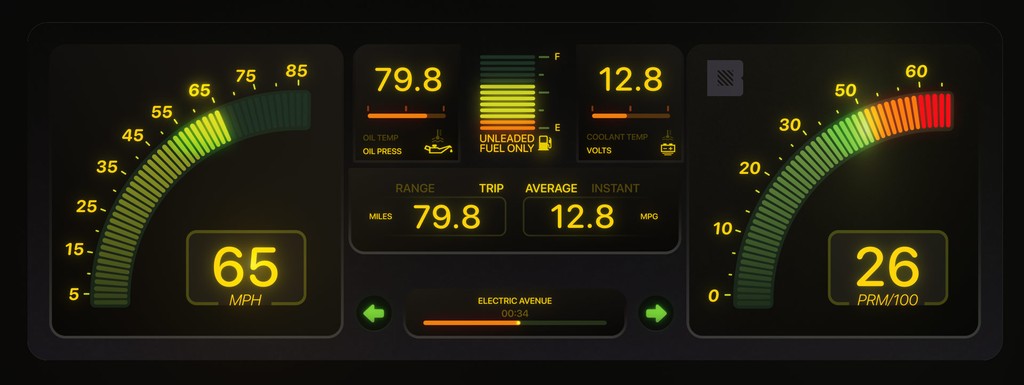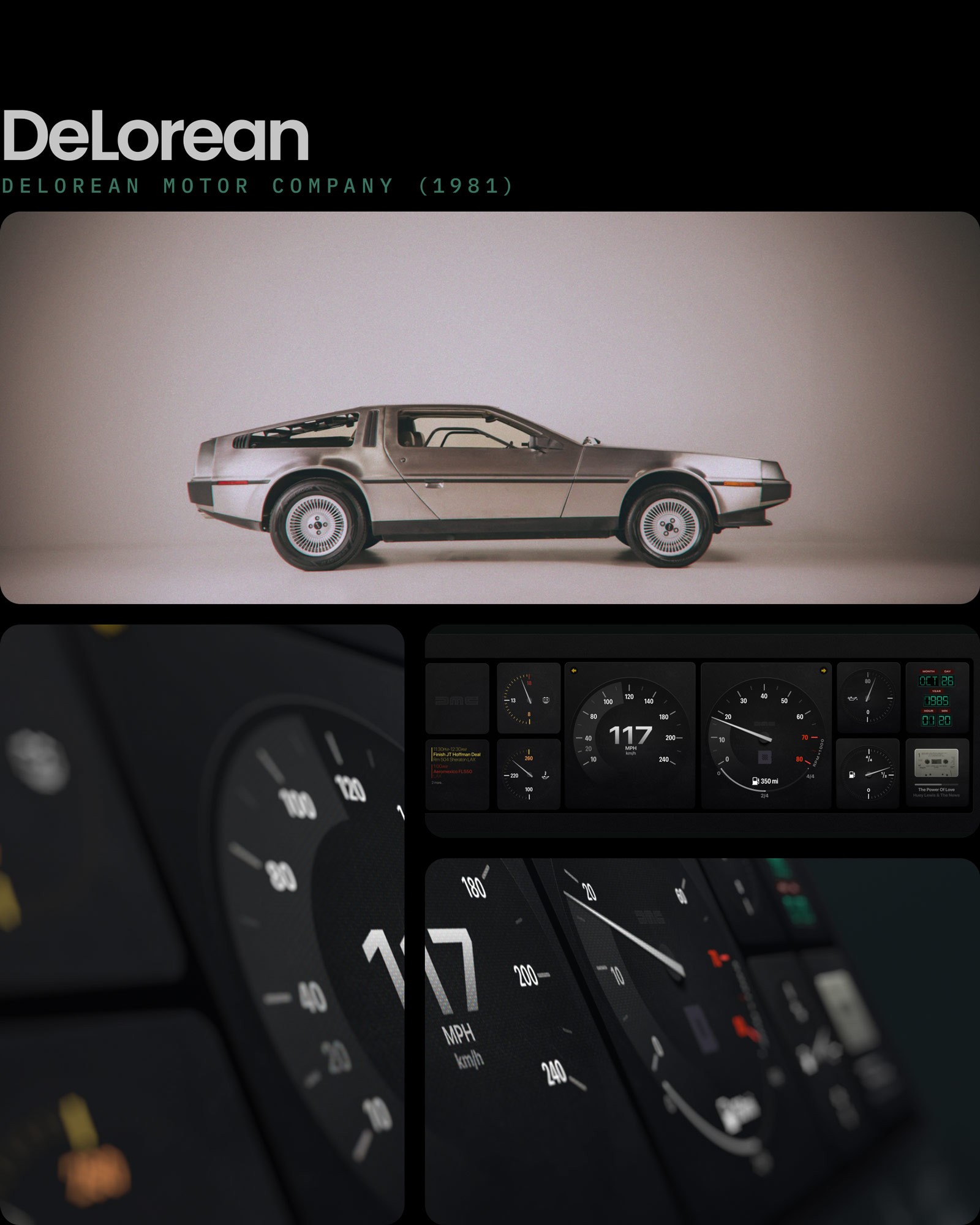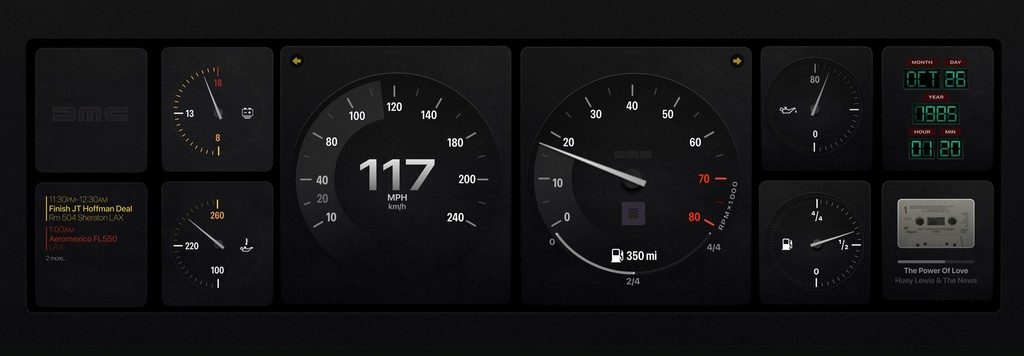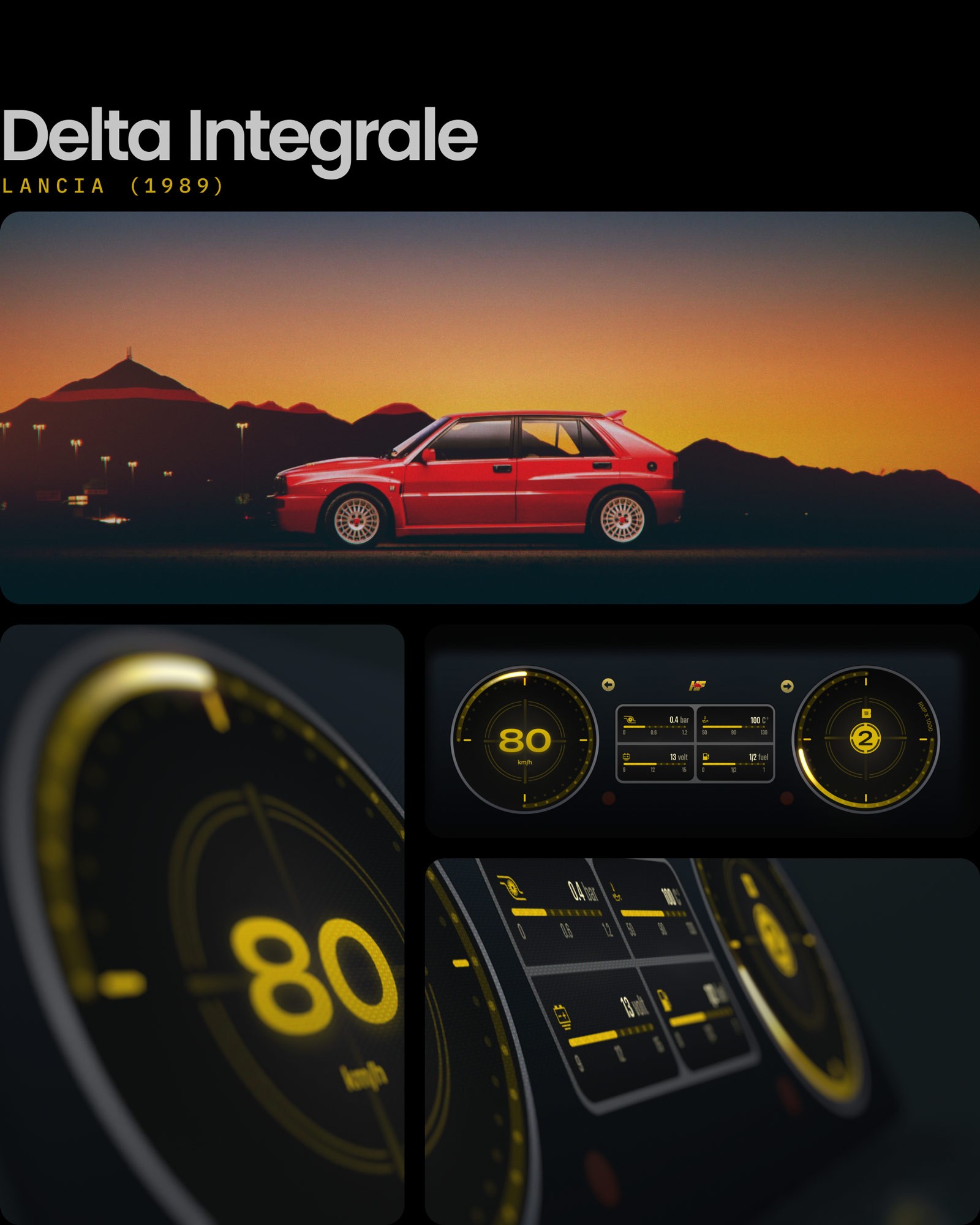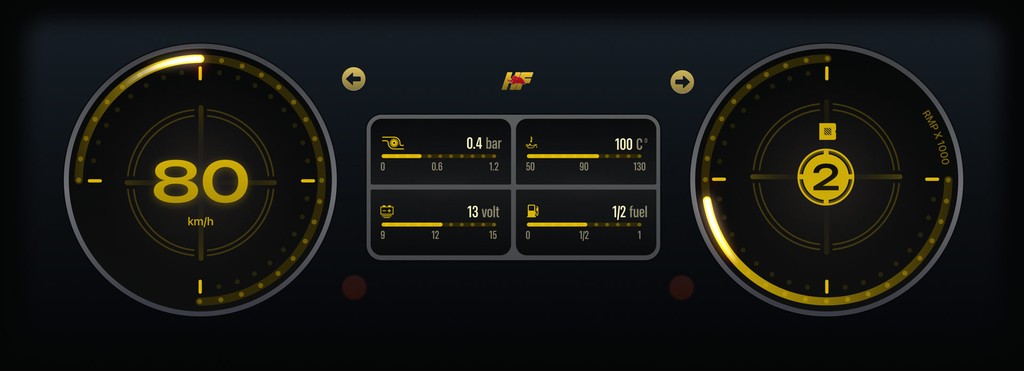CarPlay
Generations
Challenging Apple's CarPlay to adapt to 7 iconic cars.
We put Apple's new CarPlay framework to the test by redesigning several iconic instrument clusters from the pre-screen era.
A 4min deep dive into the creative process
Apple vs Automotive
Elements seen in apple's 2024 wwdc carplay session, viewable here
The new CarPlay paradigm is designed to give car designers a flexible toolkit to create instrumentation tailored to their brands. But will Apple’s new CarPlay give automakers enough creative freedom? We’ve designed iconic instrument clusters within Apple's design language to find out.
Our team’s been designing iconic instrumentation for over a decade, so we can see why this is proving a little controversial, but we also welcome new perspectives in this space— it’s badly needed! We threw together this exercise to see how far we could stretch it
First up, the 911 Turbo— classically driver-focused instrumentation with a big, centered tachometer and clear typography. This no-frills approach doesn’t feel spartan, or empty, but emphasizes the vehicle’s capabilities, ultimately feeling… badass.
We approximated the needle and found that Apple's San Francisco-typeface gets close to the original. We emphasized the boost gauge here— when the turbo power spikes in on this car, this becomes the widow-maker gauge.
Enter: the Testarossa, with its aggressive cluster featuring orangey-red backlighting and edgy typography. While radial dials aren't always suitable for digital experiences, they maintain brand connection here, reinforced by the color scheme.
The NSX is one of our all-time favorites. Its clear, precise gauge layout, with a touch of orange for the needles, combines simplicity and seriousness. We love this typeface so much that we set our own name in it. The speedometer uses this de-emphasized chaplet to indicate 10mph— an indication of how little it cares about low speeds. Kinda psychotic.
The S2000: pure segmented display bliss. The car has a huge tach because it was a technological marvel that the car could rev to 9000rpm. Our interpretation is centered around that tach, with apple-centric corner radii and more.
Before the S2000, the Corvette introduced an ambitious digital dash. While charming, it aged quickly over its 13-year production cycle. We leveraged the Vette's composition and colors within Apple's framework, maintaining its distinctiveness even when using a playful rounded typeface.
The DeLorean, an exceptionally distinct vehicle in automotive culture, features a relatively sterile cluster with 80s-style grid tiles. We used these tiles for modularity, allowing for swaps like replacing an important calendar appointment with a g-force meter designed to be era-specific.
Finally, the Lancia Delta Integrale, a cult classic rally winner, has a wildly distinct crosshair motif in its instrument cluster. This motif fits well within Apple's framework, especially if considered an extension of tick-mark chaplets. It became one of our favorites for capturing the character of this super-cool vehicle.
HMI & Beyond
Our team had a blast putting these together —There’s some great opportunities within Apple’s framework, and it’ll get more flexible over time. It’s also gonna require fluid collaboration between strong-minded brands, some of which we’ve already worked with.
Apple’s entry into this space is drawing more attention to automotive HMI in-general, and we think that will only help further this discipline. If you’d like to learn more about HMI design, you can read our insights about Designing the Future of Mobility, or view our ground breaking F1 x Vision Pro Prototype.
